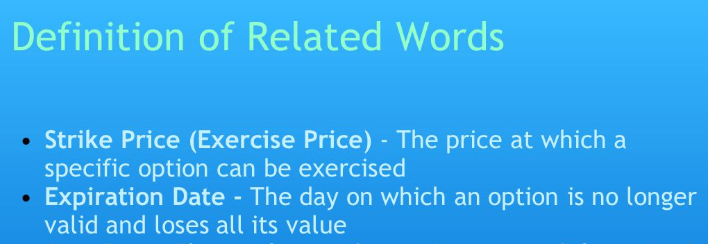
-
Daily options. Imagine being able to trade an option today with expiration tomorrow. This could be a day-to-day form, not just expiration Thursday. This introduces many new strategic possibilities. For example, if earnings are announced after today’s close, what could you do with a one-day option?
-
Rolling options. Another possibility is rolling an expiration date forward when you need more time, or to avoid exercise. Rather than closing and replacing with the typical forward roll, this would allow you to advance expiration, for a fee, of course. Would it be worth the added cost? That depends on how much the cost would be, but this adds some intriguing possibilities.
-
Adjustable strikes. Does the strike always have to be fixed? It is under the classic definition of standardized terms. But an alternative might be to exchange one strike to another (again, for a fee) to avoid lost opportunity in covered calls, for example. Being able to change the strike adds flexibility and expands the strategies to new levels.
-
Higher number of strikes. So many strategies work better when strikes are only one dollar apart. The higher the underlying price, the fewer choices you find. A 5-dollar or 10-dollar range between strikes defeats many strategies, especially when underlying price falls in between strikes and at-the-money is not possible. Risks are reduced, and flexibility is added when strikes are one dollar apart. But what about 50-cent or 25-cent levels. With these expanded strikes, you could do more with many strategies than possible today.
- Options without expiration dates. Can there be such a thing as an indefinite option? Options expire; under this assumption, you cannot remove the expiration and still call it an option. A product could be created to set up contingent future trades, but it would not be an option. For example, if you would like to purchase stock at some future date and you are willing to buy the product to freeze that price (like an extended LEAPS), that would be possible without expiration.

Among the complexities of these ideas is the question of pricing. How would you price these alternative forms of options? Most challenging of all is # 5 above, options without expirations. The “value” of this contract would have to be substantial, because without an expiration date, time value also has no meaning.
As a product offering an alternative to stock purchase (or sale), or to options with expirations, this product would have to be valued on some basis. If the company paid dividends, it could be a calculated present value of future dividends. Or lacking dividends, current premium could be a different form of present value based on likely future growth.
It is a complex problem. But it is not altogether unlikely that the options world and the range of strategies will be expanded in the future. In 1972, only calls were available, and only on a handful of companies. A few years later, index options, options on futures, and a broad range of spreads and straddles were added. Today, we enjoy a broad range of expanded options trading systems, both highly speculative and extremely conservative. This expansion is probably going to continue as well.
As the options market continues to expand, some of these ideas will become reality. Dialogue with the industry decision makers is how changes occur. The options exchanges and associations have incentive to respond to what the market wants, so new ideas only occur if options traders make their voices heard.
Michael C. Thomsett is a widely published author with over 80 business and investing books, including the best-selling Getting Started in Options, coming out in its 10th edition later this year. He also wrote the recently released The Mathematics of Options. Thomsett is a frequent speaker at trade shows and blogs on his website at Thomsett Guide as well as on Seeking Alpha, LinkedIn, Twitter and Facebook.






There are no comments to display.
Create an account or sign in to comment
You need to be a member in order to leave a comment
Create an account
Sign up for a new account. It's easy and free!
Register a new account
Sign in
Already have an account? Sign in here.
Sign In Now